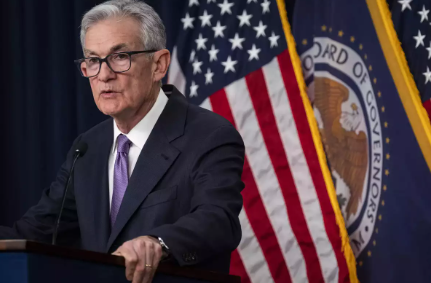Pivot to Watch: Impact of U.S. Fed Rate Cuts on India and Global Economies (GS Paper 3, Economy)

Context
- On September 20, 2024, the U.S. Federal Reserve announced a significant reduction in interest rates, marking its first cut in over four years.
- This decision is set to have profound implications for both the U.S. economy and the global financial landscape.
Introduction
- The Federal Reserve's decision to lower its benchmark interest rate by half a percentage point follows a long period of rate hikes aimed at curbing inflation.
- This pivot reflects the Fed's ongoing strategy to balance economic growth with inflation control.
Rationale for the Fed Rate Cuts
- Historic Reduction: This rate cut comes after the Fed had increased rates to their highest levels in nearly two decades, maintaining them for over a year.
- Support from the Labor Market: Fed Chairman Jerome Powell emphasized that an appropriate recalibration of monetary policy could sustain strength in the labor market amidst moderate growth and inflation.
- Inflation Targets: The Fed aims to guide inflation down to its 2% target. The Federal Open Market Committee (FOMC) indicated that further cuts might occur, with a majority signaling expectations for another reduction in 2024.
- Response to Pandemic Effects: Since early 2022, the Fed has been addressing inflation spikes driven by the COVID-19 pandemic, necessitating aggressive rate hikes.
Global Economic Impact
- Ripple Effects of Rate Hikes: The previous continuous rate increases by the U.S. central bank had significant repercussions on global economies, especially emerging markets, often leading to a stronger U.S. dollar.
- Currency Impact: The recent cut may relieve some pressure on emerging market currencies, which had been adversely affected by a robust dollar.
- Indian Perspective: Reserve Bank of India Governor Shaktikanta Das noted that a strong dollar increases debt service burdens and inflationary pressures for emerging economies.
Impact on India
- Positive Reception: India’s Chief Economic Adviser, V. Anantha Nageswaran, welcomed the Fed's decision, suggesting it would support the Indian economy.
- Limited Impact: While acknowledging the positive move, he noted that the actual impact might be marginal, given that investor interest in India has already been strong in recent years.
- Increased Capital Flows: Economists from the IMF indicated that a Fed easing cycle could enhance capital flows to emerging markets. India is likely to see increased foreign portfolio investment, particularly in its debt markets.
- Broader Relief: Other emerging economies, especially in Africa and Latin America, are expected to feel more significant relief, as they face higher costs of servicing external debts.
Way Forward
With the U.S. Federal Reserve's rate cuts, emerging markets have a pathway to enhance economic stability:
- Redirecting Capital: Policies aimed at attracting capital into infrastructure and productive sectors can help restore investor confidence.
- Controlling Inflation: Emerging economies must manage inflation to stabilize foreign reserves, reduce currency volatility, and mitigate risks.
- Balancing Growth: The Reserve Bank of India faces the challenge of balancing domestic inflation with economic growth.
- Regional Cooperation: Greater collaboration among emerging nations can assist those with substantial debt burdens.
Conclusion
- While Chairman Powell noted the resilience of the U.S. economy, uncertainties in the global economic landscape—such as geopolitical conflicts—suggest that the Fed's decision may be a cautious signal of potential challenges ahead.
- The reduction in rates offers short-term relief, especially for some emerging economies, but proactive measures will be essential to navigate ongoing global uncertainties and ensure sustainable growth in the future.


